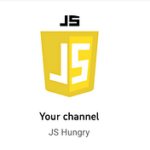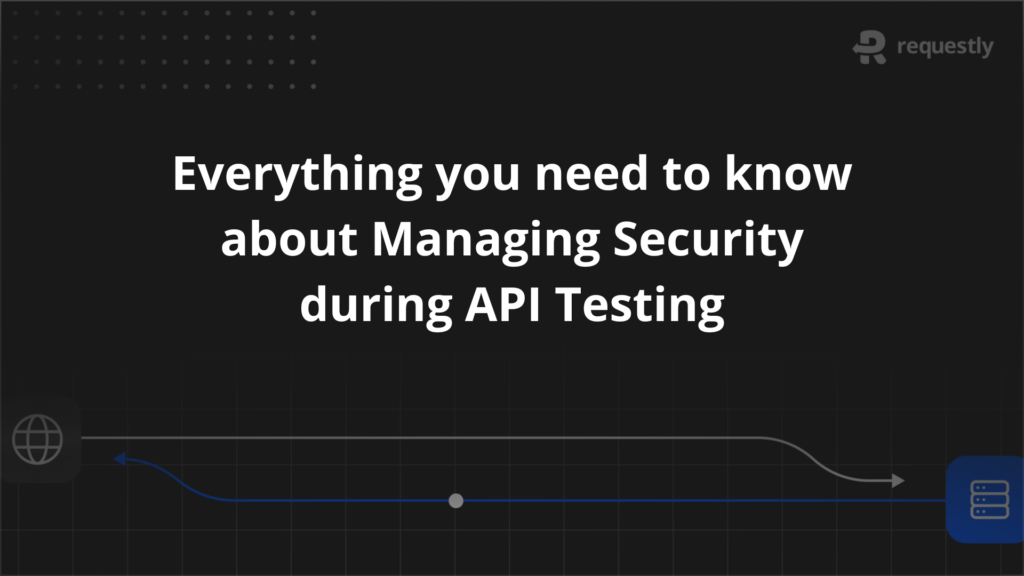Learn Advanced Frontend Development with Free Tutorials, Cheatsheets & Docs

Once you are well-versed in the basics of frontend development, you can move on to the advanced section. Here, you will learn the same topic in more detail. You will get to know how these technologies work behind the scenes and how the industry functions, following various methodologies and practices.
Basics of Internet
Understanding the basics of the Internet is crucial for any frontend developer. The Internet is a network of millions of devices globally, enabling data sharing and communication. Key components include protocols like IP and HTTP/HTTPS, the Domain Name System (DNS) for translating domain names into IP addresses, and technologies such as browsers and Content Delivery Networks (CDNs) that optimize web content delivery.
- Documentation and Articles — MDN Web Docs: The Internet
- Books — How the Internet Works by Preston Gralla
- Coursera – Internet History, Technology, and Security
- Old Treasure Video from 2009 — How the Internet Works in 5 Minutes
HTML
In HTML advanced, let’s delve deeper into the intricacies of web page structuring and semantics. Beyond basic tags, explore advanced elements like HTML5 semantic tags (e.g., <header>, <footer>, <article>) and microdata that improve accessibility and SEO. You’ll also learn about web performance optimization techniques, such as minimizing DOM complexity and utilizing efficient loading strategies to ensure faster load times. Additionally, the WebSocket API enables real-time, full-duplex communication between your browser and server to make web applications.
- Documentation – W3C HTML Specification
- Book — HTML and CSS: Design and Build Websites by Jon Duckett
- Tutorial — W3Schools HTML Tutorial
- Courses — Learn HTML5 Programming – Absolute Zero to Hero
- Cheatsheets — HTML Cheatsheets
- Communities
- Stack Overflow — HTML Questions on Stack Overflow
- Reddit — r/HTML
- FreeCodeCamp Forum — FreeCodeCamp Forum
CSS
In advanced CSS, we will focus on enhancing web designs with sophisticated techniques and best practices. You’ll explore CSS Grid and Flexbox to create flexible and responsive layouts and learn CSS animations and transitions to bring your interfaces to life. Advanced topics like pre-processors (Sass, Less), BEM (Block, Element, Modifier), and CSS-in-JS enable you to write more maintainable and scalable styles.
- Documentation – MDN CSS Specification
- Book — CSS: The Definitive Guide by Eric A. Meyer
- Tutorial — W3Schools CSS Tutorial
- Blog Posts — CSS-Tricks
- Courses — Advanced CSS Development
- Cheatsheets — CSS Cheatsheets
- Communities
- Stack Overflow — CSS Questions on Stack Overflow
- Reddit — r/CSS
- FreeCodeCamp Forum — FreeCodeCamp Forum
JS
To write more efficient and clean code, you will learn about modern ES6+ features, such as arrow functions, classes, and modules. You’ll delve into asynchronous programming with promises, async/await, and the Fetch API for handling complex data fetching and event handling. Advanced techniques like closures, the event loop, and understanding execution context will deepen your knowledge of how JavaScript works behind the scenes.
- Documentation — MDN Web Docs – JavaScript
- Book — Eloquent Javascript by Marijn Haverbeke
- Tutorial — JavaScript.info
- Blog Posts — Smashing Magazine JavaScript
- Courses — Advanced and Object Oriented JavaScript and ES6
- Cheatsheets — JavaScript Cheatsheet
- Communities
- Stack Overflow — JavaScript Questions on Stack Overflow
- Reddit — r/JavaScript
- FreeCodeCamp Forum — FreeCodeCamp Forum JavaScript
VCS Hosting
Version Control System (VCS) Hosting enables collaboration and efficient code management in development. Platforms like GitHub, GitLab, and Bitbucket offer cloud-based repositories to host your code, track changes, and manage versions. They provide essential features like branch management, pull requests, issue tracking, and code review processes to ensure your codebase is well-organized, versioned, and available for collaboration from anywhere.
Package Managers
Beyond basic commands, you’ll explore features like workspaces in Yarn for monorepo management, package-lock, shrinkwrap in npm for consistent dependency versions across environments, and the use of custom scripts to automate complex tasks. You’ll also learn about dependency auditors and security tools that help detect package vulnerabilities to ensure your project is secure, maintainable, and optimized for performance. Learn atleast 1 of the 2 below mentioned package managers. NPM is widely used for projects across industry.
npm (Node Package Manager)
- Documentation — npm Official Documentation
- Tutorial — Node.js – NPM
- Courses — Udemy – NPM – Node package manager – Quickstart & Advanced
- Cheatsheets — npm Cheatsheet
- Communities
- Stack Overflow — npm Questions on Stack Overflow
- Reddit — r/npm
Yarn
- Documentation — Yarn Official Documentation
- Blog Posts — Yarn Blog
- Cheatsheets — Yarn Cheatsheet
- Communities
- Stack Overflow — Yarn Questions on Stack Overflow
- Reddit — r/javascript (General JavaScript community that also discusses Yarn)
JS Framework
Beyond basic usage, you’ll explore advanced state management solutions, server-side rendering (SSR) for faster load times, improved SEO, and component lifecycle methods for optimal performance. You’ll also learn TypeScript for strongly typed JavaScript and better code quality, advanced routing techniques, and the use of custom hooks or mixins. You can build scalable, performant, and maintainable web applications with all this knowledge. Learn atleast 1 of the 3 below mentioned JS Frameworks. React is popular and being used in vast number of companies. Vue.js & Angular have little less adoption than React but a good number of companies use them.
React
React is a widely-used JavaScript library for building user interfaces. It allows developers to create reusable UI components and manage the state of applications effectively.
- Documentation — React Official Documentation
- Book — Learning React by Alex Banks and Eve Porcello
- Blog Posts — React Blog
- Courses — FreeCodeCamp’s React Course
- Cheatsheets — React Cheatsheet
- Communities
- Stack Overflow — React Questions on Stack Overflow
- Reddit — r/reactjs
- Dev.to — React Community
Vue.js
Vue.js is a progressive JavaScript framework for building user interfaces. It is designed to be incrementally adoptable and can be used for building both simple and complex applications.
- Documentation — Vue.js Official Documentation
- Book — Beginning Vue 3 Development By Greg Lim
- Blog Posts — Vue.js Blog
- Courses — Vue Mastery Free Courses
- Cheatsheets — Vue.js Cheatsheet
- Communities
- Stack Overflow — Vue.js Questions on Stack Overflow
- Reddit — r/vuejs
- Vue Land Discord — Vue Land Discord Community
Angular
Angular is a platform and framework for building single-page client applications using HTML and TypeScript. It is maintained by Google and offers a comprehensive solution for developing scalable web applications.
- Documentation — Angular Official Documentation
- Tutorial — Interactive Angular
- Blog Posts — Angular Blog
- Courses — Udemy – BEYOND FUNDAMENTALS
- Communities
- Stack Overflow — Angular Questions on Stack Overflow
- Reddit — r/Angular
- Angular Discord — Angular Discord Community
Build Tools
Build Tools streamline and enhance your development workflow by automating repetitive tasks and optimizing your code for production. Learn about tools like Webpack for complex module bundling, Babel for JavaScript transpilation, and Gulp or Grunt for task automation. Explore code splitting for better load times, tree shaking to remove unused code, and custom plugins and loaders to extend functionality. Advanced build tools also include setting up Continuous Integration (CI) pipelines to automate testing and deployment, ensuring your code is always in top shape and ready for release. Build tools mentioned below have different areas of application so you will learn atleast 2 of 4 below mentioned build tools. Jenkins is more of Devops tool, so initially you can chose from Webpack/Grunt & Gulp.
Webpack
Webpack is a powerful and highly customizable module bundler for JavaScript applications. It manages dependencies, bundling, and various transformations using loaders and plugins.
- Documentation — Webpack Official Documentation
- Book — SurviveJS – Webpack by Juho Vepsäläinen
- Tutorial — Webpack Getting Started
- Blog Posts — Webpack Blog
- Courses — Udemy – Webpack 4: Beyond the Basics
- Communities
- Stack Overflow — Webpack Questions on Stack Overflow
- Reddit — r/webpack
- GitHub Community — Webpack on GitHub
Gulp
Gulp is a toolkit for automating painful or time-consuming tasks in your development workflow, such as minification, compilation, unit testing, and linting.
- Documentation — Gulp Official Documentation
- Book — Getting Started with Gulp by Travis Maynard
- Tutorial — Gulp for Beginners
- Blog Posts — Getting Started with Gupl
- Communities
- Stack Overflow — Gulp Questions on Stack Overflow
- GitHub Community — Gulp on GitHub
Grunt
Grunt is a JavaScript task runner that helps you automate repetitive tasks like minification, compilation, and unit testing.
- Documentation — Grunt Official Documentation
- Book — Introducing Grunt: The JavaScript Task Runner by Stuart Bentley
- Blog Posts — Speed Up Your Web Development Workflow with Grunt
- Communities
- Stack Overflow — Grunt Questions on Stack Overflow
- GitHub Community — Grunt on GitHub
Jenkins – Continuous Integration (CI)
CI involves automatically testing and deploying code changes to ensure updates do not break your application. Popular CI tools include Jenkins, Travis CI, and GitHub Actions.
- Documentation — Jenkins Official Documentation
- Book — Jenkins: The Definitive Guide by John Ferguson Smart
- Tutorial — Jenkins Tutorial for Beginners
- Courses — Udemy – Jenkins: Continuous Integration & Delivery (Paid)
- Communities
- Stack Overflow — Jenkins Questions on Stack Overflow
- Reddit — r/JenkinsCI
- Jenkins Community Forum
Testing
After basic unit tests, learn more about integration testing to verify how different modules work together and end-to-end (E2E) testing using tools like Cypress or Selenium for simulating real user interactions. Explore test-driven development (TDD) and behavior-driven development (BDD) methodologies, which encourage writing tests before code to improve design and maintainability. Additionally, explore how to utilize mocking and stubbing to isolate tests, set up Continuous Integration (CI) pipelines for automated testing, and measure code coverage to ensure all functionality is thoroughly tested.
Jest
- Documentation — Jest Official Documentation
- Book — Testing JavaScript Applications by Lucas da Costa
- Blog Posts — Jest Blog
- Courses — Udemy – Test Driven Development using Javascript and Jest
- Communities
- Stack Overflow — Jest Questions on Stack Overflow
- GitHub Community — Jest on GitHub
Cypress
Cypress is a next-generation front-end testing tool built for the modern web. It enables you to write E2E tests, integration tests, and unit tests.
- Documentation — Cypress Official Documentation
- Book — End-to-End Testing with Cypress by Waweru Mwaura
- Blog Posts — Cypress Blog
- Courses — Cypress Course
- Communities
- Stack Overflow — Cypress Questions on Stack Overflow
- Reddit — r/CypressIO
Security Basics
Frontend developers ensure security at the code level. HTTPS encryption and preventing XSS and CSRF attacks through input validation forms are the foundation. Advanced techniques such as implementing a Content Security Policy (CSP), using HTTPOnly and Secure flags on cookies, and employing OAuth 2.0 for API security add further layers of defense. Mastering these security measures ensures your applications remain robust and resilient against evolving threats.
- Cross Site Scripting (XSS)
- Cross Site Request Forgery (CSRF)
- Content Security Policy (CSP)
- HTTP Strict Transport Security (HSTS)
- X-Content-Type-Options
- X-Frame-Options
- Mozilla Observatory – A security tool by Mozilla that helps improve the security of your website by analyzing its configuration and providing recommendations.
Server Side Rendering(SSR)
Server Side Rendering (SSR) is a technique where web pages are rendered on the server rather than in the browser. This process generates HTML on the server and sends it to the client, resulting in faster initial load times and better SEO by making content immediately available for search engines to index. Popular frameworks like Next.js for React and Nuxt.js for Vue.js facilitate SSR, helping you create fast, SEO-friendly web applications.
Static Site Generators(SSG)
Static Site Generators (SSGs) create pre-rendered HTML pages during the build process, leading to faster load times and improved security. Tools like Jekyll, Hugo, and Gatsby take your content and templates to generate static files, eliminating the need for server-side processing on each request. This approach makes your websites highly performant and easy to deploy on a CDN. SSGs help you build fast, secure, and easily maintainable websites ideal for blogs, portfolios, and documentation sites.
Progressive Web App(PWA)
Progressive Web Apps (PWAs) deliver a mobile application-like experience from webpages. Modern web capabilities like offline access, push notifications, and fast load times make them highly responsive and reliable. With service workers and a web app manifest, PWAs can be installed on a user’s device and offer an app-like experience without needing an app store.
Desktop Applications
Desktop Applications built with web technologies like HTML, CSS, and JS use frameworks like Electron and NW.js. These tools package your web app with a native wrapper, allowing it to run on Windows, macOS, and Linux with access to native system features. This approach enables you to use your existing web development skills to build powerful desktop applications beyond browsers and reduces the need for multiple codebases.
Electron
Electron is a popular framework for building cross-platform desktop apps using JavaScript, HTML, and CSS. It combines the Chromium rendering engine and the Node.js runtime, allowing you to access native APIs.
- Documentation — Electron Official Documentation
- Tutorial — Electron Tutorial
- Blog Posts — Electron Blog
- Courses — Udemy – Build Desktop Apps with Electron (Paid)
- Communities
- Stack Overflow — Electron Questions on Stack Overflow
- Reddit — r/electronjs
- GitHub Community — Electron on GitHub
NW.js (formerly Node-Webkit)
NW.js allows you to build desktop applications with HTML, CSS, and JavaScript. It extends Node.js with a browser environment and offers native APIs.
- Documentation — NW.js Official Documentation
- Blog Posts — NW.js Blog
- Communities
- Stack Overflow — NW.js Questions on Stack Overflow
- GitHub Community — NW.js on GitHub
Mobile Applications
Frameworks like React Native, Flutter, and Ionic are based on web technologies that can be deployed on iOS and Android using single codebase. They offer access to native device features such as cameras, GPS, and sensors, allowing you to create highly interactive and performant mobile experiences. These mobile development frameworks will enable you to extend your web development skills to develop versatile, high-quality mobile applications.
React Native
React Native allows you to build mobile applications using React. It enables you to create fully featured, performant apps for both iOS and Android.
- Documentation — React Native Official Documentation
- Book — React Native in Action by Nader Dabit
- Tutorial — React Native Tutorial
- Blog Posts — React Native Blog
- Courses — Udemy – React Native: The Practical Guide (Paid)
- Communities
- Stack Overflow — React Native Questions on Stack Overflow
- Reddit — r/reactnative
- GitHub Community — React Native on GitHub
Flutter
Flutter is Google’s UI toolkit for building natively compiled applications for mobile, web, and desktop from a single codebase. It uses the Dart programming language.
- Documentation — Flutter Official Documentation
- Book — Flutter in Action by Eric Windmill
- Tutorial — Flutter Tutorial
- Blog Posts — Flutter Blog
- Courses — Udemy – Flutter & Dart – The Complete Guide (Paid)
- Communities
- Stack Overflow — Flutter Questions on Stack Overflow
- Reddit — r/FlutterDev
- GitHub Community — Flutter on GitHub
Ionic
Ionic is a popular framework for building cross-platform mobile apps using web technologies like HTML, CSS, and JavaScript.
- Documentation — Ionic Official Documentation
- Book — Ionic in Action by Jeremy Wilken
- Blog Posts — Ionic Blog
- Courses — Ionic – Build iOS, Android & Web Apps with Ionic & Angular
- Communities
- Stack Overflow — Ionic Questions on Stack Overflow
- Reddit — r/ionic
- GitHub Community — Ionic on GitHub
Don’t get overwhelmed by the multitude of topics above. If you have just finished the Basics section, create a roadmap using the topics listed above and learn them one by one. Some topics are very short and may only take a few hours to understand. However, I recommend spending at least 2-3 days on each small topic. Allocate equal time to both learning and practicing. By delving deeper into each subject, you give your brain sufficient time to form lasting semantic connections. Once you complete all the topics mentioned, you’ll be become an expert frontend developer.
Contents
- Basics of Internet
- HTML
- CSS
- JS
- VCS Hosting
- Package Managers
- npm (Node Package Manager)
- Yarn
- JS Framework
- React
- Vue.js
- Angular
- Build Tools
- Webpack
- Gulp
- Grunt
- Jenkins - Continuous Integration (CI)
- Testing
- Jest
- Cypress
- Security Basics
- Server Side Rendering(SSR)
- Static Site Generators(SSG)
- Progressive Web App(PWA)
- Desktop Applications
- Electron
- NW.js (formerly Node-Webkit)
- Mobile Applications
- React Native
- Flutter
- Ionic
Subscribe for latest updates
Share this article
Related posts






















